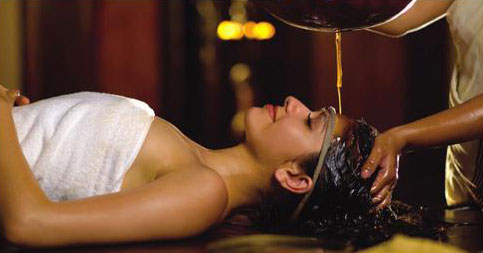
Introduction
Panchakarma is derived from combination of Pancha (Five) and Karma (Actions). The description of Panchakarma is evident from the name. Panchkarma is the latest buzz word in the Ayurvedic health care industry. Panchkarma is a seasonal purification therapy and basically deals with detoxification.
From Treatment Point of View, Ayurveda Recognises Two Types of Therapies:
- Palliation therapy
- Purification therapy
The purpose of the palliation therapy is to stimulate digestive fire (Agni) and to neutralise toxins (Ama). Purification therapy is basically known as Shodhan and is aimed at elimination of disease causing biological humours. Panchakarma in simple language guides the toxins to their sites so that they can be easily eliminated.
Parts of Panchkarma
Whole Process of Panchkarma Is Divided into Two Stages:
- Preliminary practices
- After practices
1. Preliminary Practices
Preliminary practices are known as Purva Karma. It uses preliminary detoxification and toxins neutralising methods. Preliminary practices are carried out for a period prior to Panchakarma. It involves Oleation (Snehana) and Fomentation (Svedana) methods.
Oleation (Snehana)
The purpose of Oleation is to lubricate the body by using unuctuous (Snigdha) mediums like medicate oil or medicated ghee. Kativasti, Greevavasti and Januvasti have been designed for external means of oletation. Specialised procedures like Shiro dhara and Pizzichal also serve purpose of external oletation.
Fomentation (Svedana)
The process of fomentation is highly efficacious in curing many diseases. Fomentation is essential for palliation therapy. Charaka has described several types of fomentation according to nature of the disease.
2. After Practices
The whole Procedure of Panchakarma (after Practices) is divided in to Five Steps:
- Vamana (Therapeutic emesis)
- Virecahna (Therapeutic purgation or laxation)
- Vasti (Medicated enema)
- Nasya (Nasal administration of drugs)
- Rakta mokshana (Therapeutic bloodletting)
These Five Steps Can Be Used to Abolish Acute as Well as Chronic Phase of The Diseases:
- Vamana as an instance is employed to treat acute attack of bronchial asthma. Vamana is best for pacifying aggravated Kapha. The utility of Vamana is not only limited to pacify aggravated Kapha but it can be used where Kapha is in conjunction with other biological humour. Vamana is indicated in the treatment of anorexia, bronchial asthma, cough, diabetes mellitus, epilepsy, goiter, obesity and urticaria.
- Virecahna is preserved for disease caused by aggravation of Pitta. The therapeutic efficacy of this step depends upon type of digestion. The drug of choice for performing virechana depends upon bowel habits of the patient. The spectrum of virechana is limited in treatment of diseases like arthritis, asthma, constipation, intestinal disorders, jaundice, piles, seminal-diseases, skin-diseases, enlarged spleen, and worm infestation.
- Vasti is considered to prime among five stages of Panchkarma. According to Ayurvedci practice, vasti has capability to cure intractable diseases. Vasti utilises anus, urinary tract or vagina for injection of the medicine. Injecting oil based vasti is known as Aasthpana Vasti. Sometimes herbal decoctions are used for vasti karma better known as Niruh vasti. Vasti is administered in abdominal distension, arthritis, cervical-spondylosis, constipation, emaciation, enlarged spleen, facial paralysis, headache, hemiplegia, lumbar-spondylosis and urinary retention. In Naturopathy practice, Vasti is considered to be major treatment weapon for all diseases.
- Nasya is reserved for diseases confined above the neck. Nasya is very efficacious in the treatment of upper respiratory tract diseases, allergic rhinitis, hay fever, migraine, frontal sinusitis, atrophic rhinitis, epilepsy and viral catarrh. Shada bindu Taila and Anu Taila are famous Ayurvedic formulations used in nasya practice.
- Rakta mokshana is utilised in curing diseases caused by aggravation of blood. Blood is important tissue (dhatu) of the human body and is involved in many diseases. Rakta mokshana, although less practised but is highly efficacious procedure. Medicinal leech is best utilised for this procedure.
Conclusion
The spectrum of Panchakarma is confined to the treatment of life-style and serious diseases although it is effective in allaying acute phase of the diseases. If medicines fail to provide relief in diseases, Panchakarma is seen as last remedy. It is always advisable to take Panchakarma under expert Ayurvedic supervision.
